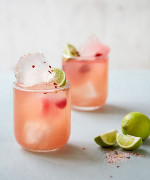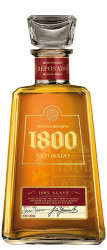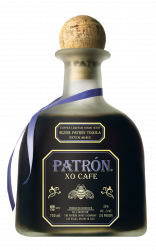In its homeland it’s revered, but here it can be misunderstood. Toast delves into the nuanced
and complex world of tequila
In its home country Mexico, tequila is a 400-year-old tradition in the same vein as cognac or scotch whisky. Unfortunately, outside of Mexico the image of tequila has been clouded – by shots, more shots, sickly sweet margarita pre-mixes and hangovers. But the tide is turning, with tequila bars popping up overseas and more attention being turned to quality over quantity. It’s time to set the record straight: give tequila the attention it deserves and let this complex and versatile spirit be the star of the liquor cabinet this summer.
A tequila is the result of both the agricultural environment and the decisions made in the distillery. Like wine, tequila can be said to exhibit characteristics of its environment – it’s a liquor that tells our tastebuds the nuanced story of the plants that made it. And because there are so many distinctions in the way the raw material is treated in the distillery, all those make their way into the taste, too – meaning tequila is a spirit that displays a good deal of variety in flavour.
The Making
Tequila is made in the Jalisco region of Mexico, a certified product like Champagne. The spirit is the result of cooking and fermenting the heart of the blue agave plant. Tequila production is labour-intensive and while modern technology offers some shortcuts, many processes are still traditional. Production is divided geographically into highlands and lowlands, and the end product is grouped into three types: blanco (white/new), reposado (rested) and anejo (aged).
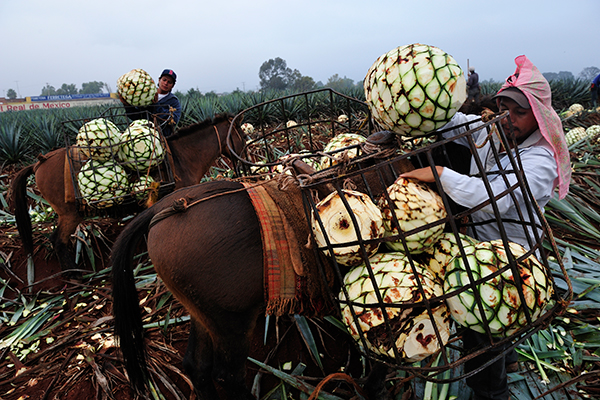
A multitude of factors make every tequila unique. Agave grown at higher altitude tends to be smaller in size and gives sweet, floral flavours. Lowlands plants are larger and somewhat drier in consistency, with mineral flavours. Some makers plant from seed, while others start with several year-old plants. It can take 12 years for the plants to reach maturity. Some producers like to harvest under-ripe while others an overripe harvest. 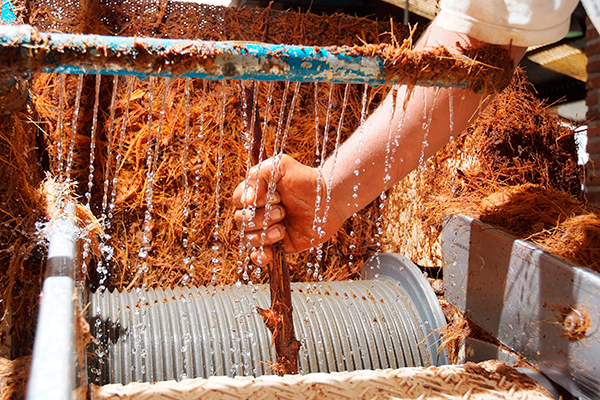
Once harvested, the distillation process offers up room for differentiation. The core of the agave plants, the piñas, are left whole or chopped up before being baked and then pulverised – by pulling the plants through a mechanical mill, or using the traditional method of dragging a stone wheel over the plants either mechanically or using mules (still the case in a very few distilleries). The juice is fermented in tanks then distilled. Blanco tequila is bottled straight after or within 60 days of the second distillation while a reposado and anejo mature in oak – for between 2–12 months and 1–3 years respectively. Blancos have fresh, peppery flavours and are perfect for a wide range of cocktails, while reposados and anejos will display increasingly complex oak-fuelled notes, and can either be sipped neat or used to add a rich layer to cocktails.
Tasting Notes
Broadly, tequila displays flavours of fruit, peppery spice and minerality, and any ageing in oak adds complex flavours which can include vanilla, caramel, spice and citrus. Here are a few of Liquorland’s top tequilas with tasting notes:?
 ?Pepe Lopez Gold Tequila
?Pepe Lopez Gold Tequila
This joven (blend of blanco and reposado) is light amber in colour, with subtle hints of vanillin from the oak. Great for adding a depth of flavour to margaritas. RRP $36.99? Sauza Blanco Tequila
Sauza Blanco Tequila
One of the top-selling tequilas in Mexico, it offers a true taste of the blue agave in its natural state – peppery with a fiery edge but smooth finish. Great for all kinds of cocktails. RRP $41.99 el Jimador Reposado Tequila
el Jimador Reposado Tequila
Rested three months in oak, it offers a good balance of agave and oak-driven flavours. Good for adding a caramel note to cocktails or for sipping over ice. RRP $45.99
Jose Cuervo Agavero A liqueur rather than a pure spirit. A base blend of blue agave reposado and anejo tequilas is aged in charred white oak casks and then infused with the essence of damian flower. RRP $95.99
A liqueur rather than a pure spirit. A base blend of blue agave reposado and anejo tequilas is aged in charred white oak casks and then infused with the essence of damian flower. RRP $95.99
?
Patron XO Café A blend of Patron Silver Tequila and pure fine coffee essence. Unlike many coffee liqueurs XO Café is drier and stronger in flavour. It makes an excellent addition to cocktails
A blend of Patron Silver Tequila and pure fine coffee essence. Unlike many coffee liqueurs XO Café is drier and stronger in flavour. It makes an excellent addition to cocktails
or neat over ice. RRP $59.99
Jose Cuervo 1800 Reposado Aged in French and American oak for six months to a year, the agave flavour is very much softened and complexity of the oak shines with orange and cinnamon notes coming through. A wonderful digestif. RRP $69.99
Aged in French and American oak for six months to a year, the agave flavour is very much softened and complexity of the oak shines with orange and cinnamon notes coming through. A wonderful digestif. RRP $69.99
Grace Ramirez on Tequila

Chef, television presenter, cookbook author and tequila aficionado Grace Ramirez divides her time between New York and New Zealand and is a dab hand at mixing tequila cocktails. If you catch her out at a bar, the drink in her hand will undoubtedly be a tequila.
“I’ve been into tequila since well before it was cool! It’s my favourite spirit,” says Grace. “If I was having a dinner with friends I might start things off with a margarita then move on to a shot of tequila with the traditional accompaniment, sangrita (a chilli-laced orange juice concoction). Then maybe a reposado to sip with dinner and a richer resposado or anejo after dinner.
“Tequila pairs naturally well with all kinds of citrus – from lime in Margaritas, grapefruit in a Paloma and orange in a Tequila Sunrise. But I love it with lime best – It??s as if the lime wakes up the tequila and makes it shine.”
Grace recommends experimenting with flavours using a classic Margarita recipe as a basis. “Pineapple and watermelon are great with tequila, and in my cookbook, La Latina, I have a beautiful Margarita recipe using dried hibiscus flowers.”
On a hot summer’s day you might like to try another of Grace’s suggestions – a Submarino – beer with a shot of tequila.
As for what kind of food to serve tequila with, Grace says, “Tequila naturally goes well with Mexican flavours, but also with other Latin American cuisines – especially Peruvian and also Caribbean.”
